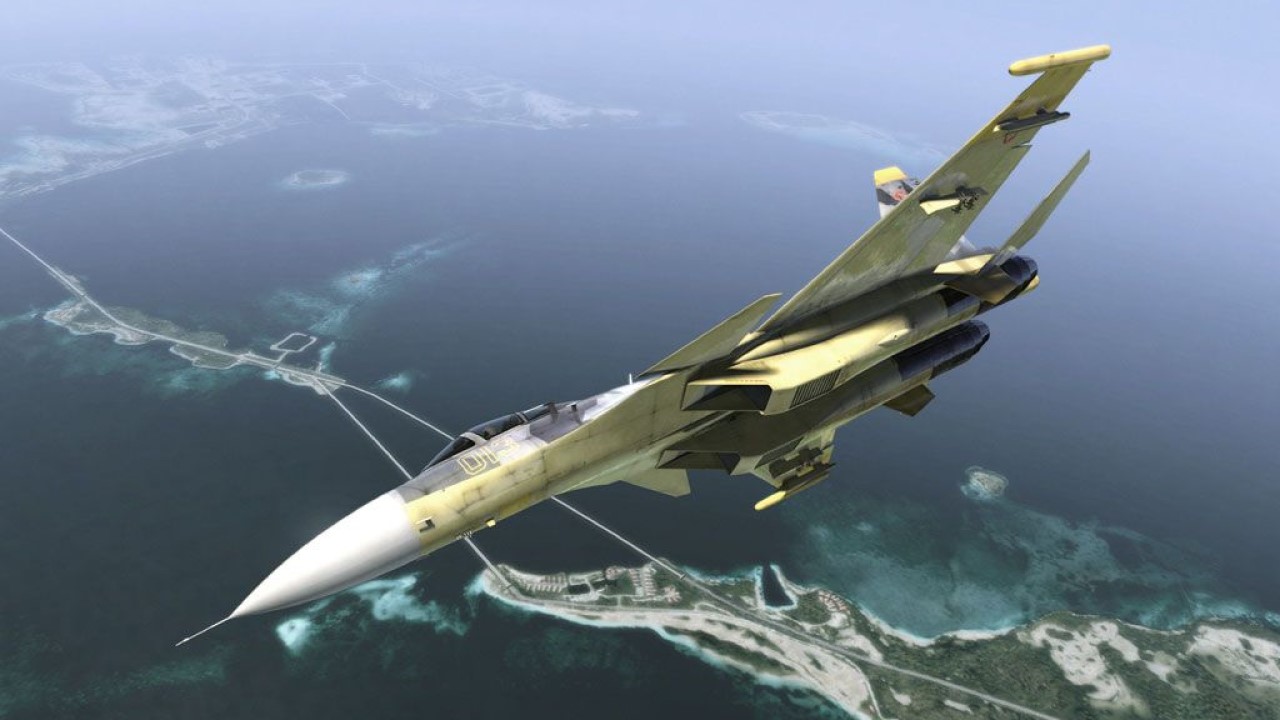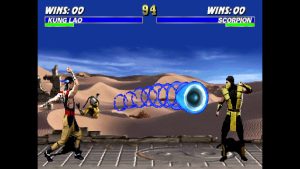
From Tekken and Soulcalibur to Tales and Dark Souls (to name just a new), there’s no shortage of beloved, prominent gaming franchises that fall under the Bandai Namco umbrella, and sure enough, sitting alongside those names as yet another one of the company’s biggest properties is Ace Combat. The flight combat simulation series has been around for nearly three decades at this point, and in those years, across a number of instalments, it has sold over 19 million cumulative copies, which means it’s clearly found a sizeable audience for itself. And looking back at the path its charted over the years, it’s not hard to see why the Ace Combat games have found the enduring and prolonged success that they have. In fact, here, that’s exactly what we’re going to do- look back at the history of the entire franchise, talk about the many changes it has gone through, the highs and lows it has seen from both critical and commercial perspectives, and once all of that is behind us, what the future may hold for this long-running franchise.
And we’re going to kick things off, as you may have imagined, by going all the way back to the series’ inception, with the release of its first instalment in 1995. Interestingly enough, the series debuted with a game that was titled Air Combat, not Ace Combat, releasing as a launch title for the original PlayStation. Originally, it was supposed to be a port of an arcade title that Bandai Namco (then known as Namco) had released a couple of years ago, but after the development team realized during development that the PS1 wasn’t powerful enough to be able to run the original game well enough, they decided to just make an entirely new game for the console from scratch.
Air Combat’s arcade-style flight combat gameplay endeared itself to many right out the gate. The game was well received by critics, which was reflected in solid sales as well- solid enough, in fact, that the franchise’s debut outing is still it’s third highest selling game to date, nearly thirty years on from its release. Air Combat was successful enough, in fact, that its publisher quickly greenlit a sequel. It launched not long after, releasing as Ace Combat 2 in 1997, just a couple of years after its predecessor.
One of the biggest things that drove Ace Combat 2’s development, interestingly enough, was designer Masanori Kato’s dissatisfactions with the visuals of the original game, and that, in turn, meant that upping the ante with the production values was one of the development team’s central goals while Ace Combat 2 was in the works. It’s fair to say that they succeeded. Upon its release, the sequel was praised by critics and players alike for not only its significantly improved visuals, but also greater variety in missions, more action-packed flight simulation gameplay, and more, which, combined with solid sales yet again, meant that Ace Combat had quickly established itself as an important IP for Namco.
The series’ third outing came not long afterward, as you may have guessed. Launching after another couple of years in 1999, Ace Combat 3: Electrosphere was the series’ final outing on the PS1- and, in many ways, also one of the series’ more experimental and weirdly ambitious games, especially for its time. In retrospect, there’s plenty that sets Ace Combat 3 apart, but series fans will tell you that its focus on story is one of the chief reasons. Ace Combat as a franchise has become strongly associated with its emphasis on story over the years, and many will tell you that Ace Combat 3 was the game that truly kicked that off in many respects.
The game also did so in a new, near-future setting (which, incidentally, also let you fly spacecraft in addition to your regular planes), while it also went on to become notorious for the stark differences between its Japanese and western releases. The latter, you see, ended up having to leave a great deal on the cutting floor due to severe budget constraints, which means there’s a significant portion of Ace Combat 3 content that is present in its Japanese version, but not its international one- most prominent being a branching storyline that changed based on players’ actions.
Understandably enough, Ace Combat 3: Electrosphere didn’t enjoy the best critical reception in western markets, and that was reflected in its sales. In North America in particular, the game underperformed, and in the end, its total sales were lower than Namco had hoped they would be. Thankfully, that wasn’t the end of the series. In fact, just a couple of years later, Ace Combat made its debut on the PlayStation 2, with Ace Combat 04: Shattered Skies coming out in 2001. And as Ace Combat faithful will gladly tell you, this one ranks as probably one of the series’ most pivotal (and best) games.
There’s so much that we now strongly associate with the Ace Combat franchise in general that can be traced back to Shattered Skies. It was, for instance, the first game in the series to be developed by an internal development team dedicated entirely to the Ace Combat franchise, called Project Aces, which is still responsible for developing Ace Combat games to this day. On top of that, Ace Combat 4, which was designed as a reboot after the relative dip that was Electrosphere, was also the first game to establish the Strangereal setting that the series still uses to this day. For those unfamiliar, Strangereal is the name of the fictional universe where the Ace Combat franchise is largely set. Strangereal’s Earth is very similar to the real world in many ways, but things such as countries, the world’s history, weaponry and technology, and more tend to be quite different.
Ace Combat 04: Shattered Skies’ attempt to reset the franchise and bring it back on track turned out to be a successful one. It enjoyed widespread critical acclaim, drawing praise for everything from its story to its action-packed linear gameplay to how it leveraged the PS2’s more powerful hardware to deliver top-notch visuals (for the time, at least). In addition to being a critical hit, it was also a big commercial success. In fact, with over 2.64 million units sold, it was the series’ highest selling game until Ace Combat 7: Skies Unknown overtook it just a few years ago.
Given how well Ace Combat 04 was received, it’s no surprise looking back that the series’ next game was the kind of iterative sequel that it turned out to be. Ace Combat 5: The Unsung War launched for the PS2 in 2004, a little over a couple of years after its predecessor came out, and by and large, the consensus was that much like Ace Combat 04, Ace Combat 5 was an excellent combat flight sim- for many of the same reasons, in fact. Ace Combat 5 was happy to be a “more of the same” kind of sequel, building on the previous entry’s foundations with a largely unambitious but well-made and compelling experience. From a sales perspective, it certainly wasn’t the kind of success that Shattered Skies was, but it still sold well enough in its own right.
From that point forward, Bandai Namco also opened up the Ace Combat franchise up to beyond just mainline numbered releases, with several spinoffs releasing over the next few years- like, for starters, top down 2D shooter Ace Combat Advance, which released for the GBA in 2005, or Ace Combat Zero: The Belkan War for the PS2 and Ace Combat X: Skies of Deception for the PlayStation Portable, both of which launched in 2006. A few more spinoffs followed in the years afterward- but not before Bandai Namco returned with another mainline numbered entry, with Ace Combat 6: Fires of Liberation releasing in 2007. This one, however, was another dip for the franchise.
Ace Combat 6 released exclusively for the Xbox 360, which, combined with relatively less enthused reception from critics and players compared to its predecessors, resulted in lower sales than Bandai Namco would have expected. In fact, to date, the game hasn’t managed to breach 1 million units sold even today, and is still the series’ lowest selling mainline entry to date. It doesn’t enjoy the best reputation among fans either. Though fun enough to play in its own right, Ace Combat 6 is deemed by many to be one of the series’ less engaging experiences, whether that’s because of its disappointing story, a handful of annoying design choices, or something else.
Given its unequivocal failure from a commercial point of view, it was no surprise that Fires of Liberation turned out to be Ace Combat’s last mainline game for a long, long time. Several more Ace Combat spinoffs were released by Bandai Namco in the years afterward, but there was a period where it seemed like the series’ stock was plummeting constantly, and whether or not it would ever claw its way back up was anyone’s guess- though, at the time, the smart money would have been on no.
That was thanks in large part to the fact that the series felt like it just didn’t know what it wanted to be with some of the spinoff instalments it put out in the years that followed. In 2010 came Ace Combat: Joint Assault, another PlayStation Portable spinoff, which was notable for being the first ever Ace Combat game to be set in the real world- though there really wasn’t much else that stood out about it. A year later, we got Ace Combat: Assault Horizon, which was also set in the real world, but in its own continuity separate from Joint Assault. Billed as a gritty, realistic take on the Ace Combat formula, Assault Horizon was ultimately an unremarkable, overly linear game that did little to bring Ace Combat back to its glory days. That same year, Bandai Namco also release Ace Combat Assault Horizon Legacy, which, confusingly enough, had absolutely nothing to do with Assault Horizon, and was instead a remake of Ace Combat 2- and, well, it wasn’t terrible. But at the end of the day, it wasn’t anything beyond unremarkable either, sadly enough.
Then came Ace Combat Infinity in 2014, and somehow, it was an even lower low for the series. Infinity was a freemium, multiplayer-focused game that came out in 2014 as a PlayStation 3 exclusive, which is just an awful combination of bad decisions. Unsurprisingly, it was lambasted by critics almost unanimously, and for many, it became a symbol of the state that Ace Combat had found itself in- a state of complete and utter ruin, to the point where it was being salvation. Or so we thought at that point, at any rate.
Impossibly enough, in spite of the widespread criticism it endured, Ace Combat Infinity somehow managed to be a commercial success for Bandai Namco, which led to the publisher greenlighting a new numbered entry, something that many had though was never going to happen again. Twelve years after the series’ last mainline entry, in 2019, Bandai Namco released Ace Combat 7: Skies Unknown, and without a shadow of doubt, proved to be worth the wait. A strong campaign, a wealth of modes, solid multiplayer gameplay, VR support, and more came together in one of the series’ strongest outings, and the acclaim it garnered also led to impressive sales. In fact, Ace Combat 7 went on to sell over 4 million units (as of 2022), which makes it the series’ highest selling game by far.
Which brings us to now, at a point where the series’ future is once again looking secure. Ace Combat 7 did an excellent job of bringing the beloved IP back into the limelight, and with its critical and commercial success, Bandai Namco has also reinvested into the franchise. In 2022, in fact, the company established Bandai Namco Aces as the new studio to lead development on all things Ace Combat, while the year prior, it was also announced that Ace Combat 8 was being developed in collaboration with support studio ILCA, and that it would be built on Unreal Engine 5.
It has, of course, been a handful of years since then, which begs the question- just where is Ace Combat 8? Bandai Namco has been working on it for a while, so are we to assume that we’re approaching the time where it will be officially unveiled? Prominent leaker Midori recently took to Twitter and claimed that the flight combat series’ next mainline instalment was indeed Bandai Namco’s next big game- but what exactly does that tell us about when it’ll come out? Is it being lined up for a release within next year or so? And if so, does that mean we should expect an announcement sometime soon?
At this point, all we can do is speculate- but there’s little doubt that there’s no shortage of excitement around what the future holds for the Ace Combat franchise. Hopefully, Bandai Namco will tell us more about exactly what that will entail sooner rather than later.



















